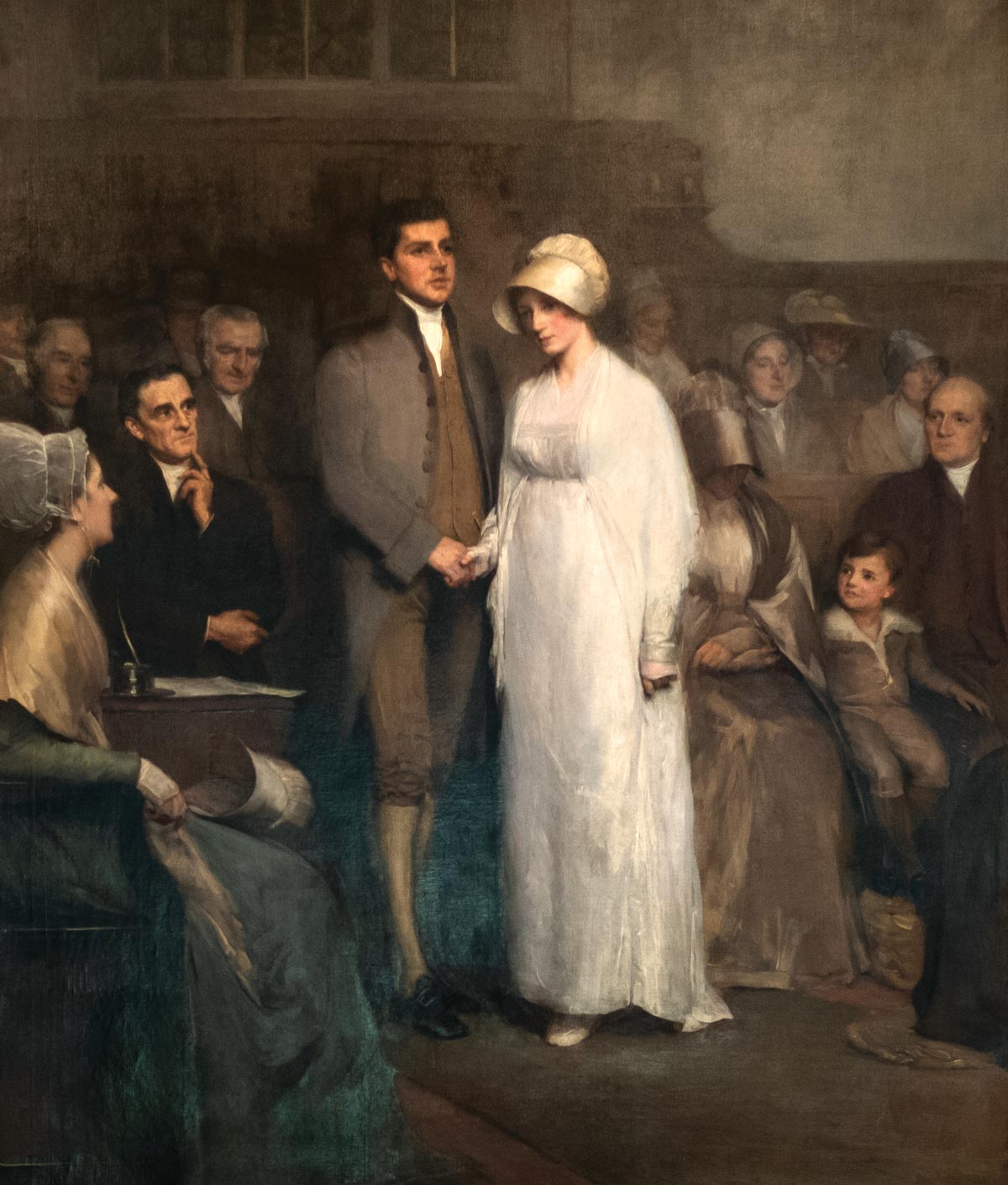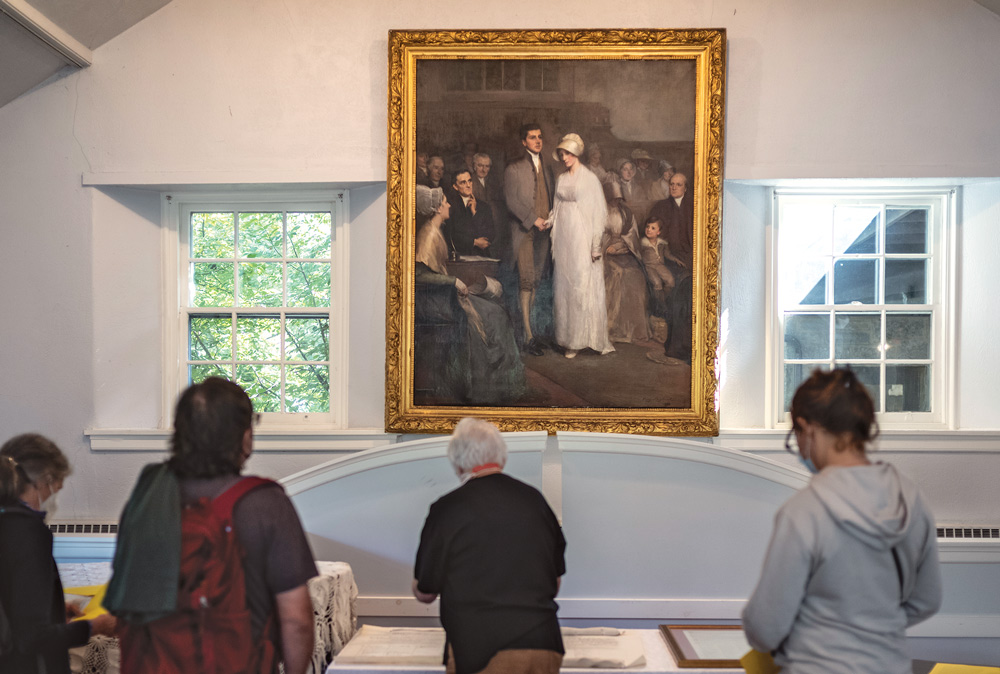
Always a Bride

During the painting’s showing in London’s Royal Academy, the name it is now known by became popular. Anachronistic, in that the bride is shown dressed in white — a custom not followed until the mid-1800s — the painting nonetheless conveys the deep meaning and simplicity of a wedding in the manner of Friends. Set in the Friends Meetinghouse at Jordans, Buckinghamshire, the marriage represented did not actually take place. The models were relatives and friends of the artist, himself a Quaker, and included his brother-in-law as the groom and his wife as the woman with the bowed head sitting behind the bride, along with other “weighty” Friends.
After seeing a photograph, the painting so moved Isaac Hallowell Clothier, a Quaker philanthropist and co-founder of the erstwhile Philadelphia department store Strawbridge and Clothier, that he bought it directly from the artist. Clothier exhibited the painting in Philadelphia and at Swarthmore College, then hung it in his home, Ballytore, in Wynnewood, Pa. After his death in 1921 and the death of his wife, Mary Clothier, in 1930, their daughter, Hannah Clothier Hull, inherited A Quaker Wedding and placed it in her home in Swarthmore, Pa.
Hannah Hull (1872–1958) graduated from Swarthmore in 1891. Married in 1898 to William Isaac Hull, a political science professor at the College, she devoted much of her energy to the peace movement and women’s suffrage, serving on a variety of national and international organizations. Her house on Walnut Lane still stands, and although now it is unclear just where the painting was hung, she welcomed Friends to come see it. When Hannah Hull died, A Quaker Wedding passed to Swarthmore College.

Early in 2019, a Swarthmore College arts committee composed of Friends Historical Library archivists Susanna Morikawa and Pat O’Donnell; Ruth Krakower of the Advancement Office; List Gallery Director Andrea Packard ’85; Stacy Bomento of the Art Department; and the late Constance Hungerford, professor emerita of art history, engaged conservator Fred Koszewnik to save the painting. Koszewnik undertook this task in March 2019, working four days a week for five weeks. Cotton swabs, organic solvents, reversible film adhesive, synthetic varnish, and touch-up paint were used in the transformation.
That semester, students in an art class exploring the ethical decisions made while conserving artwork were able to witness Koszewnik’s treatment of A Quaker Wedding. All were especially surprised and gratified when the bride’s dress, seemingly yellow, was revealed in all its original radiant luminescence.
The arts committee decided to make a long-term loan of the painting to Swarthmore Friends Meeting, located on Swarthmore’s campus. Because of restrictions stemming from the pandemic, the painting was once again stored until last July when, at long last, it was installed by Atelier Fine Art Services of Philadelphia in Whittier Room of Whittier House, adjacent to the Meetinghouse.
The move from the Art Department to Whittier House was facilitated by Jordan Landes, Friends Historical Library curator, and accomplished by Luis Alvarez and Bryan Carlton of the Events Office.
Typically, Percy Bigland’s portraits vary in size from 15 by 18 inches to 37 by 50 inches. In contrast, surrounded by its original frame, A Quaker Wedding, 1820 measures a mighty 5 feet 5 inches wide by 6 feet 6 inches high. The figures are, therefore, nearly life-size. The viewer feels, indeed, in the moment and, if religious, perhaps even “in the presence of the Lord.” And the young woman in white, accompanied by the groom, worshipers, and guests, remains forever a bride.